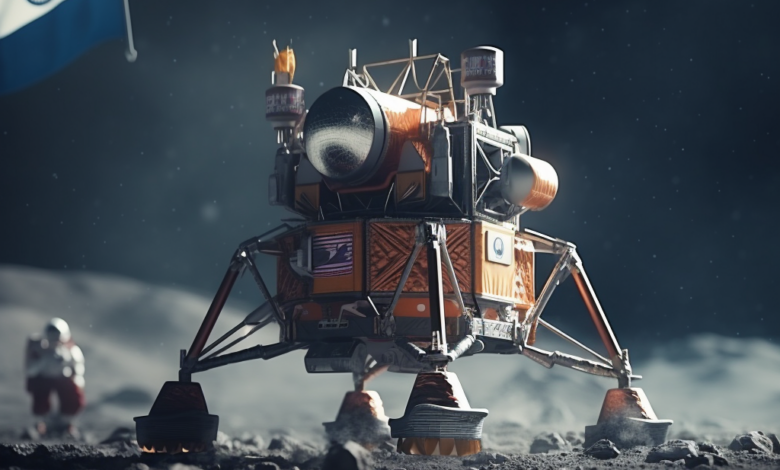
BENGALURU, Aug 23 – In a monumental achievement for India’s space exploration efforts, the Chandrayaan-3 spacecraft has triumphantly touched down on the lunar south pole. The successful landing comes as a beacon of hope and pride for the nation, especially in the wake of Russia’s recent lunar mishap.
“This is a victory cry of a new India,” proclaimed Prime Minister Narendra Modi, a jubilant flagbearer of India’s burgeoning space prowess, as he observed the historic event from South Africa where he participated in the BRICS summit. Exuberance and jubilation rippled through the ranks of scientists and officials as the spacecraft safely touched the lunar surface.
This achievement is poised to fuel the growth of private space enterprises and satellite-based businesses within the country. “India is on the moon,” declared S. Somanath, the director of the Indian Space Research Organisation (ISRO), encapsulating the collective sentiments of the nation. Marking India’s second lunar landing attempt, this achievement comes hot on the heels of Russia’s Luna-25 mission debacle.
From the northern tip to the southern tip, the entire nation was gripped by a mix of nervous excitement and steadfast prayers as the spacecraft navigated its descent. The significance of the moment was captured in the name itself – Chandrayaan, translating to “moon vehicle” in Hindi and Sanskrit. It harks back to ISRO’s earlier Chandrayaan-2 mission, which, while successful in deploying an orbiter, unfortunately met a lander crash.
The Chandrayaan-3 mission, poised for a two-week operational stint, promises an array of scientific experiments. Among these is the use of a spectrometer to scrutinize the mineral composition of the lunar surface. The south pole landing is particularly noteworthy due to its complex topography and potential significance for future lunar exploration. Experts point out that this region could harbor valuable resources like water ice, which can potentially serve as fuel, oxygen, and even drinking water for upcoming missions.
Carla Filotico, a partner and managing director at the consultancy firm SpaceTec Partners, explained, “Landing on the south pole (of the moon) would actually allow India to explore if there is water ice on the moon. And this is very important for cumulative data and science on the geology of the moon.” The anticipation preceding this triumphant moment was nothing short of electrifying. Bold headlines adorned Indian newspapers, while television channels ran countdowns, stoking a nationwide fervor. From bustling cities to quiet villages, a united chorus of prayers and well-wishes enveloped the Chandrayaan-3 mission. Even the youngest citizens participated with infectious enthusiasm. Schoolchildren, waving the Indian tricolor, gathered for live screenings of the landing.
On the banks of the revered Ganga River, and in mosques and temples across the land, spiritual offerings and pleas for a safe landing echoed. At a Sikh temple in the heart of New Delhi, Petroleum Minister Hardeep Singh Puri offered his prayers for Chandrayaan’s success. “Not just economic, but India is achieving scientific and technological progress as well,” he shared with reporters, encapsulating the comprehensive impact of such endeavors.
As Chandrayaan-3 ushers in a new chapter of scientific exploration and national pride, it underscores India’s indomitable spirit and unyielding commitment to technological advancement. With each step into the cosmos, the nation inches closer to cementing its position as a stalwart space power, gazing ever upward towards the uncharted frontiers of discovery.





